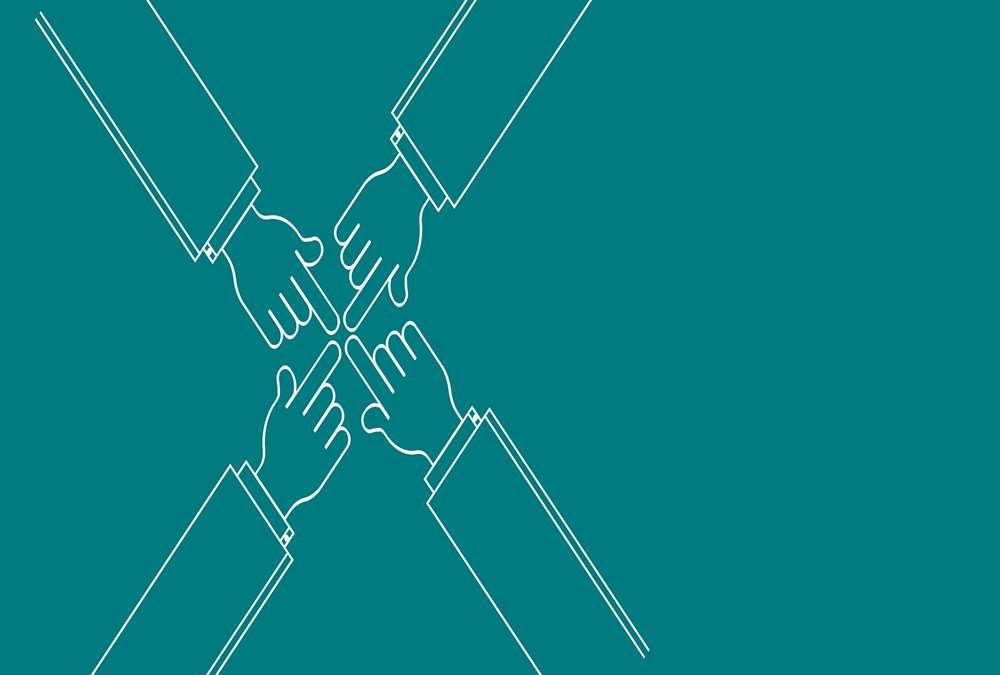- Home
- Business Processes
- Industry Knowledge
- Aerospace Industry
- Automotive Industry
- Banking Domain
- BFSI Industry
- Consumer/ FMCG Industry
- Chemicals Industry
- Engineering & Construction
- Energy Industry
- Education Domain
- Finance Domain
- Hospitality Domain
- Healthcare Industry
- Insurance Domain
- Retail Industry
- Travel and Tourism Domain
- Telecom Industry
- Leadership Skills
- eLearning
- Home
- Leadership Skills
- Project Leadership
- Eight Types of Teams
Eight Types of Teams
Many different types of teams have been identified by social scientists. Managers may encounter the diverse types of challenges while managing different kinds of teams. Challenges associated with Cross-Functional Teams might be different from that of a Geographically Dispersed Team or a Virtual Team. This article explores some common categories and subtypes of teams.
Teams are organized in different ways; teams may be suited to different purposes and can be classified based on their dependence, authority, location, purpose, time, and many other attributes. If you understand the taxonomy of teamwork you'll be a better leader and a better team player.
1: Independent and Interdependent Teams
Independent Team:
An independent team is a team where all team members are able to perform the same basic tasks independently. They may be able to help each other, perhaps by offering advice or by providing moral support, but each individual's success is primarily due to each individual's own efforts. For example, Chess players do not win their own matches merely because the rest of their teammates did, and math students do not pass tests merely because their neighbors know how to solve the equations.
Interdependent Team:
In an interdependent team, no significant task can be accomplished without the help and cooperation of any of the members; within that team members typically specialize in different tasks and the success of every individual is inextricably bound to the success of the whole team. An interdependent team benefits from getting to know the other team members socially, from developing trust in each other, and from conquering artificial challenges.
2: Formal and Informal Teams:
Formal Teams:
Formal teams or groups are created deliberately by managers carrying out specific tasks to help the organization achieve its goals. The most prevalent type of formal group is the command team, which includes a manager and all employees who report to that manager. Another type of formal team is the committee, which generally lasts a long time and deals with recurrent problems and decisions. Some formal teams are temporary. They may be called task forces or project teams. These teams are created to deal with a specific problem and are usually disbanded when the task is completed or the problem is solved.
Informal Teams:
Informal teams or groups emerge whenever people come together and interact regularly. Such groups develop within the formal organizational structure. Members of informal teams tend to subordinate some of their individual needs to those of the team as a whole. In return, the team supports and protects them. The activities of informal teams may further the interests of the organization. Saturday morning games, for example, may strengthen the player’s ties to each other.
3: On the basis of Purpose or Mission:
Along this dimension, teams can be divided into work teams and improvement teams.
Work Teams:
Work teams are primarily concerned with the work done by the organization, such as developing and manufacturing new products, providing services for customers, and so on. Their principal focus is on using the organization’s resources to effectively create its results. Work teams are responsible for the actual act of creating tangible products and services. The actual workers on an assembly line would be an example of a production team, whereas waiters and waitresses at a diner would be an example of a service team.
Improvement Teams:
Improvement teams are primarily oriented towards the mission of increasing the effectiveness of the processes that are used by the organization. For example, most companies nowadays have quality teams who focus on improving the quality of operations across the company or processes.
4: On the basis of Time:
A team is any group of people organized to work together interdependently and cooperatively to meet the needs of their customers by accomplishing a purpose and goals. Teams are created for both long term and short term interaction.
Short Term Teams:
Some teams are only temporary and are established for a specific project with a finite life. A product development team, an executive leadership team, and a departmental team are long-lasting planning and operational groups. Short term teams might include a team to develop an employee onboarding process, a team to plan the annual company party, or a team to respond to a specific customer problem or complaint.
Long Term Teams:
Other kinds of teams are permanent and stay as long as the organization is operating. For example, teams focusing on providing effective customer service tend to be permanent parts of many organizations.
5: On the basis of Authority structure:
In some organizations, teams may cross over various functional units (e.g., marketing, finances, human resources, and so on). Such arrangements are often difficult because of ambiguities regarding authority. By contrast, some organizations use teams that are intact with respect to the existing structure of the organization. Companies like General Motors are structured such that people work together on specific products all the time and do not apply their specialty to a wide range of products.
6: Functional, Cross-functional & Self-Managing:
Functional or departmental Teams: Groups of people from the same work area or department, who meet on a regular basis to analyze customer needs, solve problems, provide members with support, promote continuous improvement, and share information.
Cross-Functional Teams:
Groups of people who are pulled together from across departments or job functions to deal with a specific product, issue, customer, problem, or to improve a particular process.
Self-Managing Teams:
Groups of people who assume responsibility for self-direction in all aspects of work are called self-managing teams.
7: On the basis of Nature of Work:
Executive Team:
An executive team draws up plans for activities and then directs these activities. An example of an executive team would be a construction team designing blueprints for a new building and then guiding the construction of the building using these blueprints.
Command Team:
The goal of the command team is to combine instructions and coordinate action. In other words, command teams serve as the “middle man” in the task. For instance, messengers on a construction site, conveying instructions from the executive team to the builders would be an example of a command team.
Project (cross-functional) Teams:
A team used only for a defined period of time and for a separate, concretely definable purpose, often becomes known as a project team. Managers commonly label groups of people as a "team" based on having a common function. Members of these teams might belong to different groups, but receive an assignment to activities for the same project, thereby allowing outsiders to view them as a single unit. In this way, setting up a team allegedly facilitates the creation, tracking, and assignment of a group of people based on the project in hand. This category of teams includes negotiation, commission, and design-team subtypes. In general, these types of teams are multi-talented and composed of individuals with expertise in many different areas, with the goal of using this combination of talent to produce fresh solutions and innovative products. Negotiation teams serve to persuade, commission teams make tactful judgments and decisions about sensitive subjects, and design teams are charged with generating strategies.
Advisory (parallel) Teams:
Advisory teams make suggestions about a final product. For instance, a quality control group on an assembly line would be an example of an advisory team: they would examine the products produced and make suggestions about how to improve the quality of the items being made.
Action Teams:
Action teams are highly specialized and coordinated teams whose actions are intensely focused on producing a product or service. An NFL football team would be an example of an action team. Other examples are the military, paramedics, and transportation.
8: On the basis of Location:
Co-located Teams:
These are the traditional teams which are go located in one place and work together for a common goal.
Virtual Teams:
Developments in communications technologies have seen the emergence of the virtual work team. A virtual team is a group of people who work interdependently and with a shared purpose across space, time, and organization boundaries using technology to communicate and collaborate. Virtual team members can be located across a country or across the world, rarely meet face-to-face, and include members from different cultures.
Related Links
You May Also Like
-
In this study of power, Raven identified five bases of power as coercive, reward, legitimate, referent, and expert. The 5 Types of Power can help you decide when it is appropriate to use a particular type of power in important situations. Leadership involves authority and it is very important for leaders to understand what type of power they're using.
-
Have you ever noticed how we express ourselves or interact with each other? Have you ever wondered what communication is and what role it plays in our lives? One may wonder if communication is so omnipresent and integral to our lives, why study communication at all? We need to study communication because it is a complex process that consists of many elements and is also beset with a number of barriers and there is a need to remove the barriers so that the communication process is effective.
-
Recognizing Stress & its Sources
As an individual, you almost certainly know what stress feels like. Stressors are events or situations to which people must adjust. Stressors may be physical or psychological in nature. The level of severity of stress is determined not merely by exposure but the intensity, duration, and frequency of stressors. The sources of stress are many. They arise from multiple areas both with the individual and from the environment.
-
Concept & Definition of Stress
Stress is a popular expression used by people in day to day life. Pressures of day to day living sometimes necessitate coping or dealing with them and stretch the body beyond its natural capacity. They are called stressors. Stress is a natural, ongoing dynamic, and interactive process that takes place as people adjust to their environment.
-
Many different types of teams have been identified by social scientists. Managers may encounter the diverse types of challenges while managing different kinds of teams. Challenges associated with Cross-Functional Teams might be different from that of a Geographically Dispersed Team or a Virtual Team. This article explores some common categories and subtypes of teams.
-
Narrative leadership is interpreted as the leader who aspires to construct leadership by telling stories. Leadership is a task of persuasion, of winning people’s minds and hearts. Storytelling is thus inherently suited for the task of leadership. Learn about the narrative leadership style and how to use this style to inspire and motivate followers or to manage change.
-
In today's innovation-driven economy, understanding how to generate great ideas has become an urgent managerial priority. Managers need to encourage and champion ideas and need to help their organizations incorporate diverse perspectives, which spur creative insights and facilitate creative collaboration by harnessing new technologies. Innovation is the embodiment, combination, and/or synthesis of knowledge in original, relevant, valued new products, processes, or services.
-
Creating Highly Effective Teams
How do we create effective teams? What comes to mind when you think about an effective team? High performing teams exhibit accountability, purpose, cohesiveness, and collaboration. It is a team that works seamlessly as a whole. Everyone brings unique talents and strengths and support each other to bring out the best in everyone. How do you create one?
-
Generating Ideas using SCAMPER
SCAMPER is an activity-based thinking process that can be performed by Cooperative learning. SCAMPER is an acronym that provides a structured way of assisting students to think out of the box and enhance their knowledge. This can be used in the organizational context as a technique for creative problem solving and as a toolkit to generate fresh ideas.
-
Facilitative Leadership is all about involving the employees in the decision-making process at all levels enhancing their sense of ownership, responsibility, and motivation. Facilitative leadership style uses a number of indirect communication patterns to help the group reach consensus and build commitment for the decision taken. To be effective in modern organizations, managers need to become facilitative leaders, learn what it means to be a one.
Explore Our Free Training Articles or
Sign Up to Start With Our eLearning Courses

About Us
Learning
© 2023 TechnoFunc, All Rights Reserved










